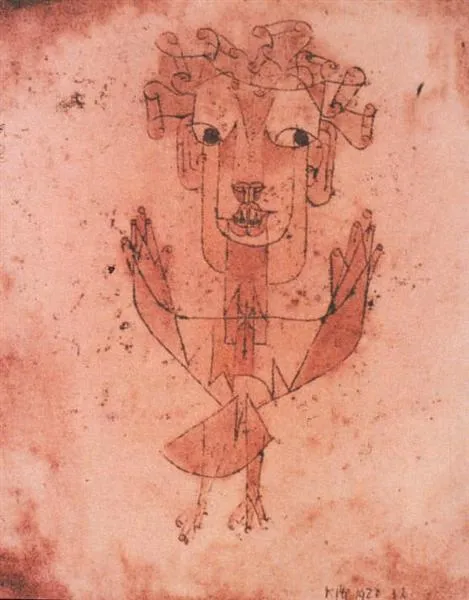Apreciados lectores, hace poco publiqué una primera entrega de este trabajo (ver aquí), y dejaba pendiente para una segunda parte lo concerniente a cómo se cumple esa “escucha de la interioridad” o relación con la espiritualidad, tanto en el autor (emisor) como en el lector (receptor). Es lo que intentaré a continuación.
Dear readers, I recently published a first installment of this work (see here), and I left pending for a second part what concerns how this "listening to interiority" or relationship with spirituality is fulfilled, both in the author (sender) and in the reader (receiver). This is what I will attempt below.

En el autor, apuntaría, esta relación con la interioridad podría realizarse al tomar a la vida como materia primera de la creación; no en el sentido de una reproducción meramente (auto)biográfica, anecdótica, confesional o catártica. No, sino al tomar el vivir y el crear como una pareja inseparable del conocimiento del sí-mismo.
Esto supone asumir la escritura creadora como experiencia interior, como espacio del hacer donde se “forja el alma” –en el decir de Víctor Krebs–, pues en el contacto receptivo con / de las cosas, en la atención contemplativa de la vida, la palabra convertida en hecho estético se deja penetrar por la dimensión trascendente del mundo.
Como expresa el hablante de Elegías de Duino de Rainer Maria Rilke:
Escucha, corazón mío, como solo
escucharon los santos
(…) No es que puedas soportar
la voz de Dios, de alguna manera. Pero escucha este soplo,
el mensaje incesante que surge del silencio.
(de la “Primera Elegía”)
(…) la más visible dicha
se nos entrega sólo cuando la transformamos
dentro de nosotros.
(de la “Sétima Elegía”)
Así, esa interiorización es, en gran medida, silencio del creador (autor) frente al mundo para a-sentirlo y, a la vez, reserva de libertad. Como canta Rilke: “Siempre vueltos hacia la creación, vemos / sólo sobre ella el reflejo de lo libre”.

This supposes assuming creative writing as an inner experience, as a space of doing where "the soul is forged" -in the words of Victor Krebs-, because in the receptive contact with/of things, in the contemplative attention of life, the word turned into an aesthetic fact allows itself to be penetrated by the transcendent dimension of the world. As the speaker of Rainer Maria Rilke's Elegies of Duino expresses: Listen, my heart, as only (from the "First Elegy") (...) the most visible bliss (from the "Seventh Elegy") Thus, this interiorization is, to a great extent, silence of the creator (author) in front of the world in order to a-feel it and, at the same time, a reserve of freedom. As Rilke sings: "Always turned towards creation, we see / only on it the reflection of the free".
In the author, I would point out, this relationship with interiority could be realized by taking life as the primary matter of creation; not in the sense of a merely (auto)biographical, anecdotal, confessional or cathartic reproduction. No, but by taking living and creating as an inseparable couple of the knowledge of the self.
heard by the saints
(...) It is not that you can endure
God's voice, somehow.But listen in this breath,
the incessant message that arises from the silence.
is given to us only when we transform it
within us.
Dominio público | Public Domain
En el lector (el autor es también un lector), la literatura –desde la perspectiva según la estamos concibiendo aquí– vendría a ser un enriquecimiento de su interioridad, lo cual puede tener varios rasgos:
*El lector revive y recrea lo vivido y recreado por otro, lo que ocurre como vivencia de extrañamiento y de identificación a la par.
*Crea su propio texto al actualizar el leído por él, lo que supone el diálogo con lo otro que el texto le ofrece en medio del silencio de la lectura y la espera.
*Restituye en él (lector) el sentido mágico de la palabra, por el que aprendemos que somos y estamos hechos de palabra.
*Rescata el sentido plural y ambiguo de la realidad, pues por la lectura se le revelan otros rostros de ella, y con ello un “conocimiento” diferente del mundo.
*Reivindica nuestra capacidad de asombro, de aproximación al misterio (lo extraño, desconocido, inasible y, generalmente, indecible).

In the reader (the author is also a reader), literature -from the perspective as we are conceiving it here- would come to be an enrichment of his interiority, which can have several features:
*The reader relives and recreates what has been lived and recreated by another (author), which occurs as an experience of estrangement and identification at the same time. *The reader creates his own text by updating the one he has read, which implies a dialogue with the other that the text offers him in the silence of reading and waiting. *It restores in him (reader) the magical sense of the word, through which we learn that we are and are made of words. *It rescues the plural and ambiguous sense of reality, because through reading other faces of reality are revealed to him, and with it a different "knowledge" of the world. *It vindicates the capacity for astonishment, for approaching the mystery (the strange, unknown, ungraspable and, generally, unspeakable).
Referencias | References:
Krebs, Víctor (1998). Del alma y el arte. Carcas: Museo de Bellas Artes.
Rilke, Rainer M. (1987). Elegías de Duino. Caracas: Monte Ávila Editores.

Gracias por su lectura. Thank you for reading.



